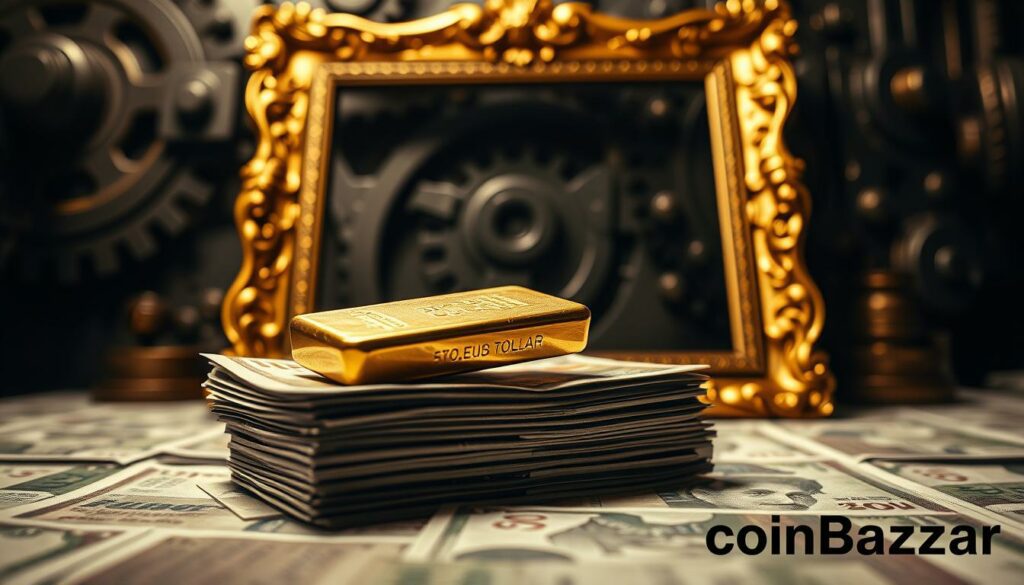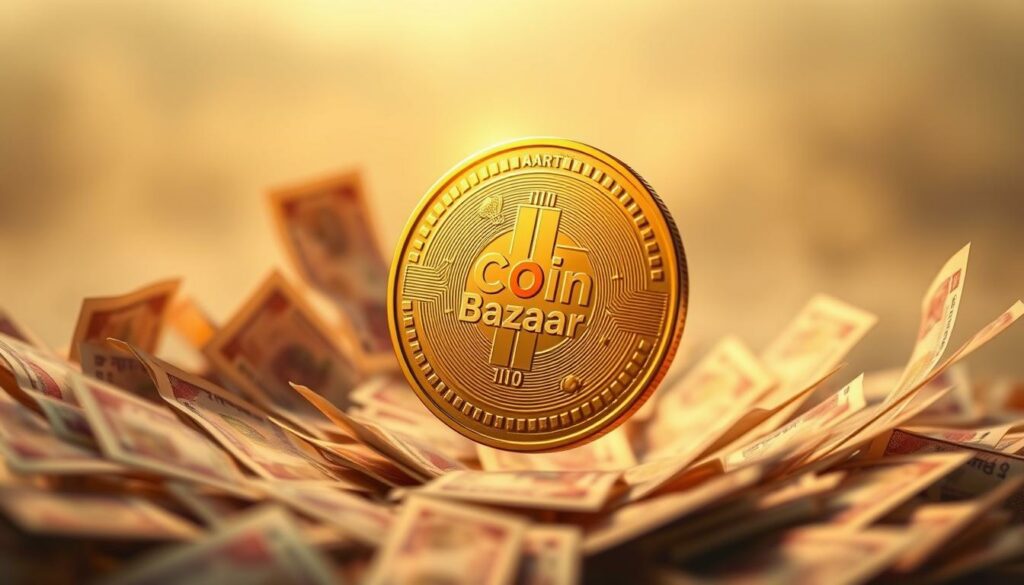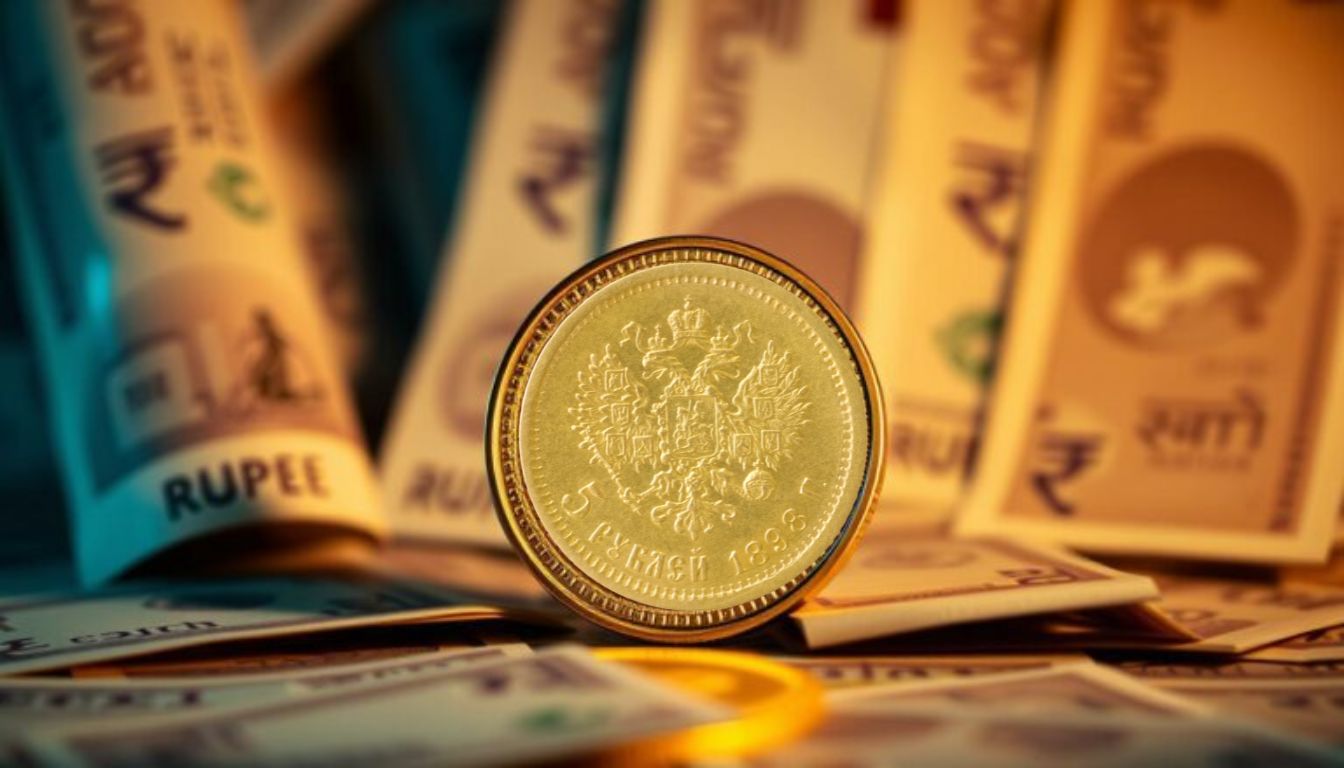Exclusive Deals & Trending Items


MMTC-PAMP 50gm Laxmi Ganesh Shankh Silver Coloured Coins of 25 Gram Laxmiji and 25 Gram Ganeshji in 999.9 Purity / Fineness
Shop Now

Tribhovandas Bhimji Zaveri & Sons Ganesh Color Silver Coin of 20 Grams in 999 Purity Fineness
Shop NowWhen you think about investing, you might wonder if gold is still a good way to protect against inflation. For a long time, gold was seen as a safe choice against rising prices. But now, experts are debating if it still works well.
Are you thinking about adding gold to your investment mix? The link between gold and inflation is not simple. Knowing about this connection is key to smart investing.
Key Takeaways
- Understanding the historical context of gold as an inflation hedge.
- The current debate among experts about gold’s effectiveness.
- Factors influencing the relationship between gold and inflation.
- Strategies for using gold in your investment portfolio.
- Alternatives to gold for financial protection.
The Historical Relationship Between Gold and Inflation
Gold and inflation have a complex history. This relationship has changed over time due to many economic factors. As an investor, knowing this can help you make better choices about gold.


Gold’s Traditional Role as a Store of Value
Gold has always been a safe investment during tough economic times. It protects against inflationary pressures, which can reduce the value of money.
Key Historical Periods of Inflation and Gold Performance
History shows how gold and inflation have interacted. This includes the gold standard era and the time after 1971 when currencies were not tied to gold.
The Gold Standard Era and Its Collapse
Before the 20th century, money was linked to gold. This kept prices stable but made it hard to change money policies. The end of the gold standard in 1971, known as the Nixon shock, changed everything.
Post-1971 Fiat Currency World
After 1971, gold prices were free to move with the market. This led to big changes in gold prices. These changes were influenced by monetary policy and inflation.
| Period | Gold Price Change | Inflation Rate |
|---|---|---|
| 1970-1979 | +300% | 6.5% |
| 1980-1989 | -45% | 3.5% |
| 2000-2009 | +250% | 2.5% |
Knowing these trends can guide you in investing in gold. It helps you understand the link between gold and inflation better.
Understanding Inflation and Its Impact on Your Wealth
Rising prices and economic ups and downs make it crucial to understand inflation. It’s a steady increase in prices of goods and services. This can reduce your buying power and harm your financial health.
What Causes Inflation in Modern Economies
Several factors lead to inflation, like monetary policy and economic growth. More money in the economy means businesses raise their prices. Also, supply chain issues and higher demand push prices up.
How Inflation Erodes Your Purchasing Power
Inflation makes money worth less. The same money can’t buy as much as it used to. For example, if inflation is 5%, $100 today will only be worth $95 next year.
The Real Cost of Inflation on Your Savings
Inflation can really hurt your savings. Here’s why:
- It reduces your buying power over time.
- It makes fixed-income investments less valuable.
- It increases the cost of living.
To fight these effects, consider inflation hedges like gold. Gold often keeps its value when the economy is uncertain.


Gold vs Inflation: The Fundamental Connection
The link between gold and inflation is based on economic theory. This theory shows gold’s ability to fight inflation. When inflation goes up, the value of paper money often falls. But gold’s value usually goes up, making it a good protection.
Why Gold Has Been Considered an Inflation Hedge
Gold has always been seen as a safe place to keep money and a shield against inflation. Its rarity and independence from paper money make it special. Investors often choose gold when the economy is shaky or inflation is high, seeing it as a reliable safe-haven.
The Economic Theory Behind Gold’s Anti-Inflationary Properties
Economic theory says gold’s limited amount helps it fight inflation. When banks print more money, the value of that money can drop. But gold’s value usually stays the same or goes up.
Limited Supply vs Unlimited Currency Printing
The difference between gold’s limited supply and the endless printing of money is crucial. As governments print more money, gold becomes even scarcer, which can make its value go up.
“Gold is a unique asset that has been a store of value for centuries. Its scarcity and the fact that it can’t be printed make it an attractive hedge against inflation.”
In summary, gold and inflation are connected by economic theory and history. Knowing this can help investors decide to add gold to their portfolios as a defense against inflation.
The Indian Context: Gold’s Cultural and Economic Significance
In India, gold is more than a valuable metal. It’s a symbol deeply rooted in the country’s traditions and economy. Gold’s value goes beyond its monetary worth, touching many parts of Indian life.
Gold in Indian Households and Wedding Traditions
Gold is key in Indian homes, especially in weddings. Families give gold jewelry to the bride, wishing her prosperity and luck. This custom makes India a big buyer of gold worldwide.
Gold gifts at weddings are not just a tradition. They are also a smart investment for many families. They see gold as a reliable asset that can be kept for generations.
India’s Gold Market and Its Global Influence
India’s gold market is big, affecting gold prices globally. The country’s gold demand plays a big role in setting global prices.
How Indian Gold Demand Affects Global Prices
India’s gold demand is key in setting global gold prices. The country’s big use of gold for jewelry and other items changes the global supply and demand balance.
| Year | India’s Gold Demand (Tonnes) | Global Gold Price (USD/Oz) |
|---|---|---|
| 2020 | 800 | 1,800 |
| 2021 | 900 | 1,900 |
| 2022 | 850 | 1,850 |
The table shows India’s gold demand affects global gold prices. This shows India’s big role in the global gold market.
For investors, knowing about gold in India is key. It helps in making smart choices about gold investment and portfolio diversification during economic uncertainty.
Analyzing Gold’s Performance During Major Inflationary Periods
Investors often turn to gold when inflation rises. But gold’s past performance is more complex than expected. To grasp gold’s role as an inflation shield, we must look at its history during big inflation times.
The 1970s Stagflation Era
The 1970s saw a rare mix of high inflation and slow economic growth, known as stagflation. Gold’s price soared, from $35 an ounce in 1970 to $850 by 1980. This jump was mainly due to the fall of the Bretton Woods system and the US dollar’s value drop.
“The 1970s were a defining period for gold as an inflation hedge. Its performance during this era cemented its reputation as a reliable store of value during times of economic uncertainty.”
The 2008 Financial Crisis
Gold’s price fell at first in the 2008 crisis but then climbed back up. As people sought safe investments, gold prices hit a high in 2011. This showed gold’s value as a safe asset during economic downturns.
Recent Pandemic-Induced Inflation (2020-2023)
The COVID-19 pandemic caused a big increase in money printing, leading to inflation worldwide. Gold prices went up, hitting new records. Yet, its performance varied, showing the intricate link between gold and inflation.
Gold’s Performance During India’s Inflationary Episodes
India has faced several inflationary times, with gold being a key player in its economy. Historically, gold has been a top choice during inflation, with its price often matching inflation rates.
| Year | Inflation Rate (%) | Gold Price (INR) |
|---|---|---|
| 2010 | 12.0 | 18,450 |
| 2011 | 8.9 | 24,100 |
| 2012 | 10.4 | 28,350 |
Looking at gold’s past in inflationary times offers insights into its role as a hedge. Gold has generally done well, but results have varied. This highlights the need for a detailed understanding of gold’s role in protecting finances.
Current Monetary Policy and Its Effect on Gold Prices
Knowing about the current monetary policy helps us understand gold price changes. Central banks, like the Reserve Bank of India (RBI), play a big role in gold’s value.
RBI Policies and Their Impact on Gold Valuation
The RBI’s policies can greatly affect gold prices. For example, actions to control inflation or stabilize the currency can sway investor views on gold.
Recently, the RBI has used various tools to manage inflation. How these actions impact gold valuation is key for investors to grasp.
Interest Rates and Their Relationship with Gold
Interest rates also play a big part in gold prices. When rates go up, holding gold becomes less attractive, which can lower demand.
“The relationship between interest rates and gold prices is inverse. As rates rise, gold tends to fall, and vice versa.” –
How to Interpret Policy Changes for Your Gold Investments
To make smart choices, keep an eye on RBI news and interest rate changes. Here’s a simple table to show how policy changes can affect gold prices:
| Policy Change | Impact on Gold Prices |
|---|---|
| Interest Rate Hike | Negative |
| Inflation Targeting Measures | Positive |
| Currency Stabilization | Positive |
By understanding these dynamics, you can better navigate the gold market and make more informed investment decisions.
Gold Investment Options for Indian Investors
Indian investors have many choices for gold investments. They can choose from physical gold to modern financial tools. This variety meets different investor needs, from those who like tangible assets to those who prefer financial instruments.
Physical Gold: Jewelry, Coins, and Bars
Physical gold is a top choice for many Indian investors. It includes jewelry, coins, and bars, providing a real value. It’s important to check the gold’s purity and authenticity when investing in it.
Hallmarking Standards and What to Look For
The Bureau of Indian Standards (BIS) hallmarking ensures gold’s purity. When buying physical gold, look for the BIS hallmark. Also, remember that making charges can increase the total cost.
Gold ETFs and Mutual Funds Available in India
Gold ETFs and mutual funds offer a modern way to invest in gold. They don’t require physical storage. These financial tools are traded on stock exchanges, making it easy to buy and sell gold.
Gold ETFs mirror gold prices, offering returns based on gold price changes. Mutual funds may invest in gold ETFs, gold mining companies, or other gold-related securities.
Sovereign Gold Bonds, Gold Monetization Scheme, and Digital Gold
The Indian government has launched initiatives like Sovereign Gold Bonds (SGBs) and the Gold Monetization Scheme. SGBs are government-backed bonds that offer a safe alternative to physical gold. The Gold Monetization Scheme lets investors deposit gold in banks, earning interest.
Digital gold is another option, allowing investors to buy and store gold online. It’s backed by physical gold in vaults. Investors can exchange their digital gold for physical gold or cash.
Each gold investment option has its own benefits and considerations. Understanding these can help Indian investors make choices that fit their goals and risk levels.
The Pros and Cons of Gold as an Inflation Hedge
It’s important to know the good and bad sides of gold as an inflation hedge. This knowledge helps you make smart investment choices. You should think about both the benefits and drawbacks of investing in gold.
Advantages of Gold During Inflationary Periods
Gold is often seen as a safe choice against inflation. When prices rise, gold’s value usually goes up too. One big plus of gold is that it helps keep your wealth safe over time. Its value isn’t linked to any single currency or economy.
Here’s a quick look at gold’s performance during times of high inflation:
| Inflationary Period | Gold Performance |
|---|---|
| 1970s Stagflation | Significant increase in value |
| 2008 Financial Crisis | Moderate increase in value |
| 2020-2023 Pandemic | Notable increase in value |
Limitations and Drawbacks to Consider
Gold has its pluses, but it also has downsides. One big issue is the cost and hassle of storing and insuring physical gold. It can be expensive and hard to manage.
Storage, Insurance, and Liquidity Challenges
Investing in gold means you have to think about where to store it and how to insure it. You also face challenges when trying to sell or trade large amounts of gold.
In summary, gold can be a good part of your investment mix during inflation. But, it’s key to understand both its benefits and limitations. This way, you can make better choices for your investments.
Alternative Inflation Hedges Compared to Gold
Inflation can reduce your buying power. But, there are other options besides gold to fight this risk. It’s key to know what these alternatives offer.
Real Estate and REITs in the Indian Market
Real estate is seen as a good inflation fighter. When inflation goes up, so do property values and rents. This helps protect your money. In India, REITs make it easier to invest in real estate with less money.
A ICRA report shows Indian REITs are growing and stable. This makes them a solid choice against inflation.
Inflation-Indexed Bonds and Fixed Deposits
Inflation-indexed bonds, like those from the Government of India, keep your money’s value steady. Some fixed deposits also offer high interest rates, but they might have special rules.
“Inflation-indexed bonds are an attractive option for risk-averse investors looking to protect their investments from inflationary pressures.” –
Commodities and Cryptocurrency: New Age Alternatives
Commodities like oil and metals can also fight inflation. Cryptocurrencies, like Bitcoin, are seen as modern hedges. But, they’re riskier because of their price swings and unclear rules.
| Investment | Inflation Hedge Potential | Risk Level |
|---|---|---|
| Real Estate | High | Medium |
| Inflation-Indexed Bonds | High | Low |
| Cryptocurrency | Uncertain | High |
When you spread out your investments, think about these gold alternatives. Each has its own good points and risks. It’s important to match your investment with your financial goals and how much risk you can handle.
Gold’s Performance Against the Indian Rupee
Gold’s history against the Indian Rupee gives investors key insights. It’s a traditional shield against inflation and currency changes. This makes gold a favorite in India.
Historical Gold Returns in INR Over Different Time Periods
Looking at gold’s returns in INR over time shows its value. It’s a strong hedge against currency drops. Gold has given positive returns in INR, especially when inflation or economic troubles rise.
In 2008, gold prices in INR soared, helping investors. During the COVID-19 pandemic, gold kept its value against the rupee.
Rupee Depreciation and Gold’s Value Preservation
The Indian Rupee’s fall against major currencies affects gold’s INR value. As the rupee drops, gold’s INR value goes up. This helps investors keep their buying power.
This link makes gold a solid choice for wealth protection against currency swings.
Case Study: Gold vs Rupee During Major Economic Events
Looking at big economic events, like the 2013 currency crisis or the 2020 pandemic, shows gold’s strength. For example, in 2013, the rupee fell hard against the US dollar. But gold prices in INR jumped, offering a safe place for investors.
In summary, gold’s performance against the Indian Rupee is shaped by rupee drops and economic uncertainty. Understanding these factors helps investors decide if gold is right for their portfolios.
Portfolio Diversification: The Role of Gold in Your Investment Strategy
When you think about making your investment portfolio more diverse, gold is a key player. It has been a reliable asset for centuries. It helps protect your wealth against inflation, market ups and downs, and economic uncertainty.
Optimal Allocation to Gold for Indian Investors
The right amount of gold in your portfolio depends on your financial goals, how much risk you can take, and how long you plan to invest. Experts usually suggest putting 5% to 15% of your portfolio in gold. This can help balance out the risks of other investments like stocks and bonds.
Balancing Gold with Equity, Debt, and Other Asset Classes
A good portfolio mixes different types of investments, like stocks, bonds, real estate, and gold. The goal is to find a balance that fits your investment goals and how much risk you’re willing to take. For example, when the market is very volatile, adding more gold can help reduce losses.
Age-Based Gold Allocation Strategies
Your age and how long you plan to invest affect how much gold you should have. A common rule is to increase your gold investment as you get closer to retirement. It can be a steady source of value. Here’s a simple age-based strategy:
| Age Group | Recommended Gold Allocation |
|---|---|
| 20-30 years | 5%-10% |
| 30-50 years | 10%-15% |
| 50+ years | 15%-20% |
By adding gold to your investment plan and using an age-based strategy, you can make your portfolio stronger and more likely to grow over time.
Tax Implications of Gold Investments in India
Knowing how taxes affect gold investments is key to getting the most out of your money. It’s important to understand the tax rules for different types of gold investments.
Taxation of Physical Gold and Capital Gains
Physical gold, like jewelry and coins, faces capital gains tax when sold. The tax rate varies based on how long you held it. If you held it for over three years, it’s taxed at 20% after adjusting for inflation. But, if it was held for less than three years, it’s taxed based on your income tax rate.
Tax Benefits of Sovereign Gold Bonds vs Other Gold Forms
Sovereign Gold Bonds (SGBs) have tax perks. You won’t pay capital gains tax if you hold them until they mature. But, any interest you earn on SGBs is taxed based on your income tax rate.
Recent Tax Changes Affecting Gold Investors
New tax rules have changed how gold investments are taxed. For example, gold ETFs now face the same tax as other mutual funds. It’s important to keep up with these changes to make smart investment choices.
Understanding the tax side of gold investments can guide you to better choices. It might even help you save on taxes.
Expert Perspectives: What Financial Advisors Say About Gold vs Inflation
Financial experts share their views on gold as an inflation hedge. They offer advice for investors. As the economy changes, knowing how gold protects wealth is key.
Current Market Outlook from Leading Indian Analysts
Top financial advisors in India have different views on gold against inflation. Ranveer Singh, a well-known financial analyst, says, “Gold is seen as a safe asset. Its performance during inflation is watched closely by investors.”
Some think gold will keep being a good hedge against inflation. They point to its past performance in tough economic times. Others say gold’s role as an inflation hedge can change due to money policy and global trends.
Long-term Projections for Gold as an Inflation Hedge
Experts believe gold will stay important in a well-diversified portfolio, especially against inflation. “Gold’s value is in keeping wealth safe over time,” says Dr. Rohan Kapoor, an economist.
| Investment Horizon | Projected Gold Performance |
|---|---|
| Short-term (1-3 years) | Moderate growth, influenced by market volatility |
| Medium-term (4-7 years) | Steady appreciation, driven by inflation concerns |
| Long-term (8+ years) | Strong potential for growth, as a hedge against prolonged inflation |
Recommendations for Different Investor Profiles
Financial advisors suggest different gold strategies for different investors. For those who are more cautious, a mix of physical gold and Sovereign Gold Bonds is advised. More daring investors might look into gold ETFs or digital gold.
Choosing to invest in gold should be based on a deep look at your financial goals and how much risk you can take. By understanding expert views and the market, investors can make smart choices to safeguard their wealth.
Common Misconceptions About Gold and Inflation
Gold is often seen as a shield against inflation. Yet, many myths surround its true role. Investors often think gold always wins in inflationary times. But the truth is more complex.
Debunking Popular Myths in the Indian Context
In India, gold is more than just an investment. It’s a cultural treasure. Many believe gold always goes up when inflation does. But this isn’t always true.
Gold prices can sometimes fall behind inflation or even drop. This happens even when inflation is rising.
Another myth is that gold automatically protects against inflation. But gold’s performance depends on many things. These include global economic trends, interest rates, and currency changes.
Understanding the Real Relationship Between Gold and Inflation
The bond between gold and inflation is intricate. Gold can act as a shield against inflation. Yet, it’s not a perfect shield.
In extreme inflation, gold’s value can be unpredictable. This is especially true during hyperinflation.
The Truth About Gold During Hyperinflation
In hyperinflation, money’s value plummets fast. Gold might not be safe from this drop. As “The Economist” points out, “In extreme hyperinflation, even gold can lose value. This is because the whole monetary system is in doubt.”
Gold’s role as an inflation shield depends on many factors. Investors need to understand these to make smart choices.
Conclusion: Is Gold Still the Ultimate Inflation Hedge?
The link between gold and inflation is complex. Gold has been seen as a safe value and a shield against inflation. Yet, its performance in different times of inflation has changed.
In India, gold is not just valuable; it’s also deeply rooted in culture and economy. It’s a top choice for investors. Gold’s worth is in keeping wealth safe when times are uncertain.
Gold acts as a financial shield by keeping its value steady. It’s not the only choice, but it’s key for a balanced portfolio. Finding the right mix of gold and other investments is crucial for protection.
Whether gold is the best hedge against inflation depends on your financial goals and how much risk you can take. Knowing how gold and inflation work together helps you protect your wealth. This knowledge guides you in making smart investment choices.


















